
This article may contain affiliate links where I make a small commission for purchases you make from links that you click from this article. By purchasing through these links, you support me at no additional cost to you. Thanks for your support.
Looking for a scenic and culturally rich adventure? The Michinoku Coastal Trail hike offers a 620 mile (1000-km) journey through Japan’s Tohoku region. Established in 2012, this trail provides stunning ocean views, diverse landscapes, and deep connections with local communities. In this guide, you’ll find everything from trail highlights to planning tips to packing tips, ensuring your hike is unforgettable.
I like travel that makes you think. Being a little uncomfortable by something you see in a new country is an important part of travel. I was surprised when I heard that Japan had created a new long-distance hike around one of Japan’s most deadly disasters, a region that had experienced so much pain and suffering. But I also understood why it was a good idea to bring more visitors and knowledge of the Tohoku region.
In 2023 I traveled to Japan to experience Japan’s newest 1000 km hiking trail – the Michinoku Coastal Trail (MCT). I was excited to experience the history, adventure, and views of the MCT as well as learn about the disaster and resiliance of the people.
The Japanese are resilient. They are skilled at turning lemons into lemonade. Every time I go there, I think about how they rebuilt after WWII and turned their image around to the rest of the world. They’ve now taken that special skill of turning things around to the tsunami-devastated region of Tohoku.
Key Takeaways
-
The Michinoku Coastal Trail Japan’s newest 620 mile hiking route on the Pacific coast. The trail’s mission is to commemorate the lives of the people lost in the tsunami and keep their legacy going. It also helps the region’s economy bu encouraging more tourism in Tohoku.
-
The trail is made up of 3 different geographies: Cliffs, peninsulas, and coastal beaches. Municipalities made up of 150 volunteers maintain the trails.
-
The best times to hike the trail are spring and autumn, offering pleasant weather and stunning views, while various accommodation options enhance the experience. Summers are very hot and humid, and winters will be cold and snowy. However, overall the weather here is cooler than the rest of the Japanese mainland.
-
Engaging with local culture and cuisine, from traditional ryokans to unique dining experiences, adds depth to the hiking adventure along the trail. This is more than just a hike; it’s a cultural journey.
Discover the Michinoku Coastal Trail
There are a number of long-distance hiking trails in Japan, but what makes the MCT stand out is its length, and it’s the only coastal walking trail Japan has. In addition, it’s not centered around ancient history like the Kumano Kodo (LInk) is or spirituality like the Shikoku 88 Temple hike. Instead, it’s about recent history – natural disasters and rebuilding.
Established as part of the region’s recovery efforts after the devastating 2011 tsunami, the Michinoku Coastal Trail serves as a poignant reminder of nature’s power and humanity’s resilience, as well as promoting cultural exchange and boosting local tourism.
From sandy beaches to rugged cliffs, the trail offers diverse landscapes that cater to every hiker’s preference. It traverses through the Tohoku region, inviting hikers to a relatively unvisited part of the country. It connects four prefectures and 28 towns and cities from Fukushima, to Soma, to Aomori, to Hachinohe. It’s the perfect escape from the tourist crowds that are gripping Japan these days but still allows you to really connect with the culture.
Michinoku Coastal Trail Route Map
Trail Highlights
I hiked portions of the trail from Fukushima prefecture to Hachinohe. I sadly didn’t have time to cover the entire trail. Aproximately 130 people have hiked the entire trail to date. Even though the trail is still relatively new, it is quickly gaining popularity.
My guide, Katy, designed a program that would take our group to the best, most impactful sections of the trail. We stopped at a number of highlights and took time to talk to locals, enjoy the bounty of the sea, and experience the trail in a multitude of ways including hiking, biking, kayaking, and SUP!
Check out all of the Tohoku coast highlights in my blogpost->
MCT Natori Trail Center
If possible, I suggest you stop at this incredible resource center. This is ground zero of Michinoku Coastal Trail information! Here, you can get resources such as maps, books, lodging information, and trail conditions. This is where you can also reserve boats for the Urato Islands section of the hike. Plus – you can talk to the people who work there and ask them any questions about the trail. They have an area where you can sit and meet with people who can assist with your planning. The center has laundry facilities, a kitchen, and you can even camp out on the big lawn. The MCT trail goes right past the center – so you can’t miss it!
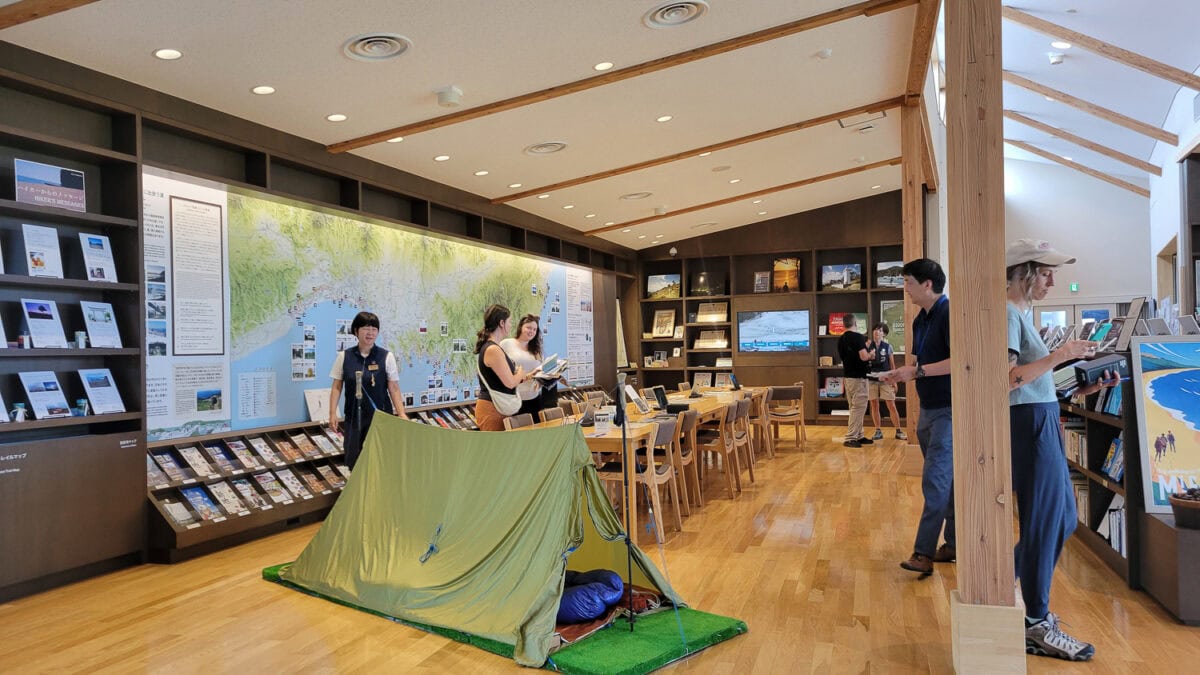
In addition, you can get your MCT passport book here to keep track of notes and stamps!
Miracle Pine Tree
View the Miracle Pine Tree in Rikuzentakata, Iwate Prefecture, a symbol of hope and resilience. This lone pine survived the 2011 tsunami and now stands as a testament to the strength of nature and humanity’s spirit.
Kitayamazaki Cliffs
The dramatic Kitayamazaki Cliffs offer awe-inspiring views, rising 656 feet above the Pacific Ocean and were untouched by the tsunami. This was my favorite section to hike on the trail. It was the most challenging, but also the most rewarding. There are a number of great viewpoints to get incredible views of the shear clifffaces. If you can only do one day on the trail – do this one!
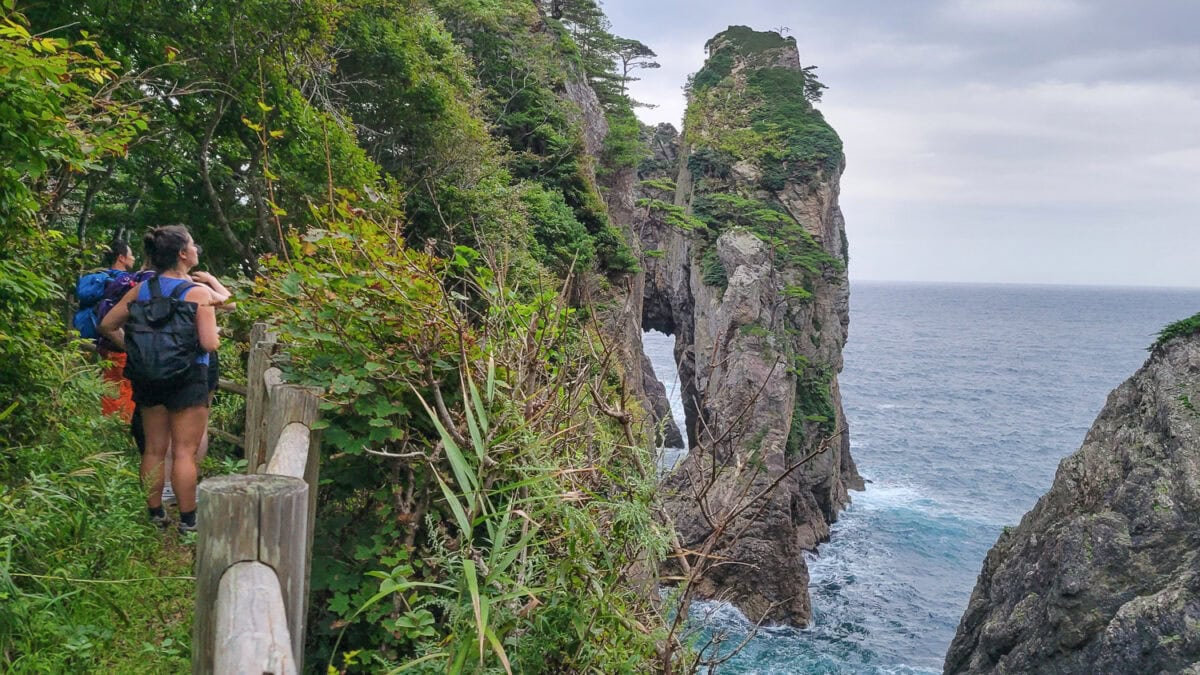
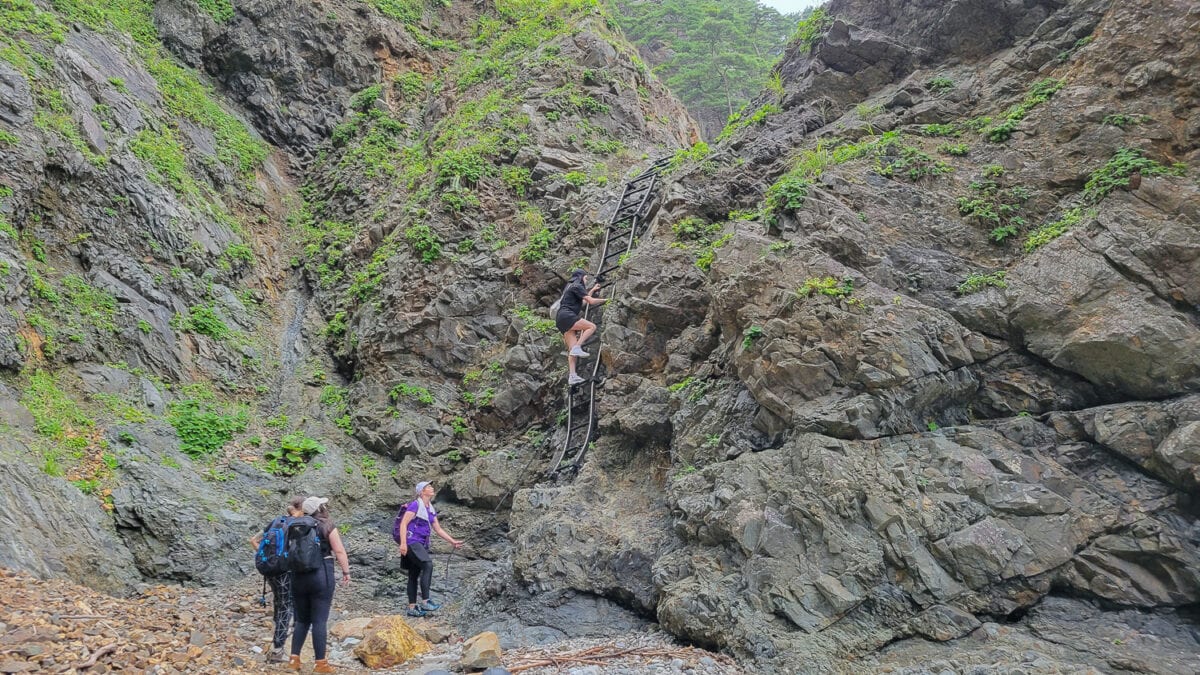
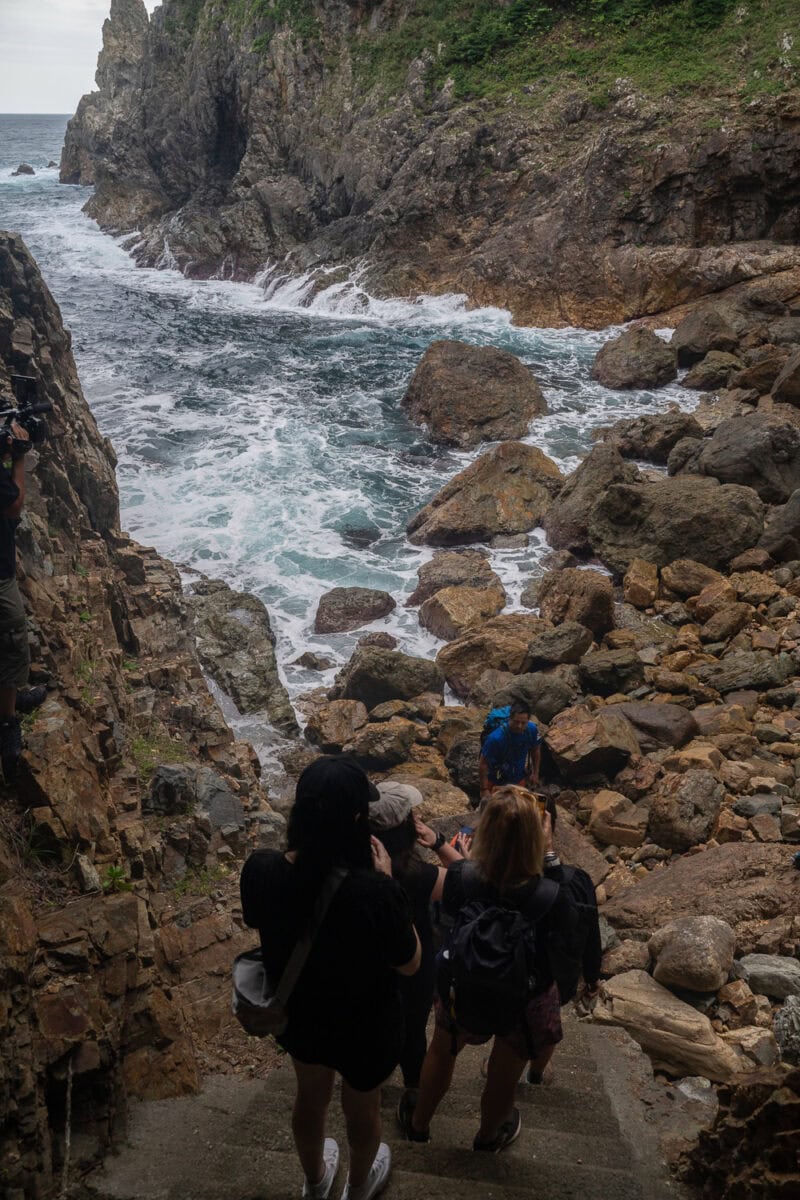
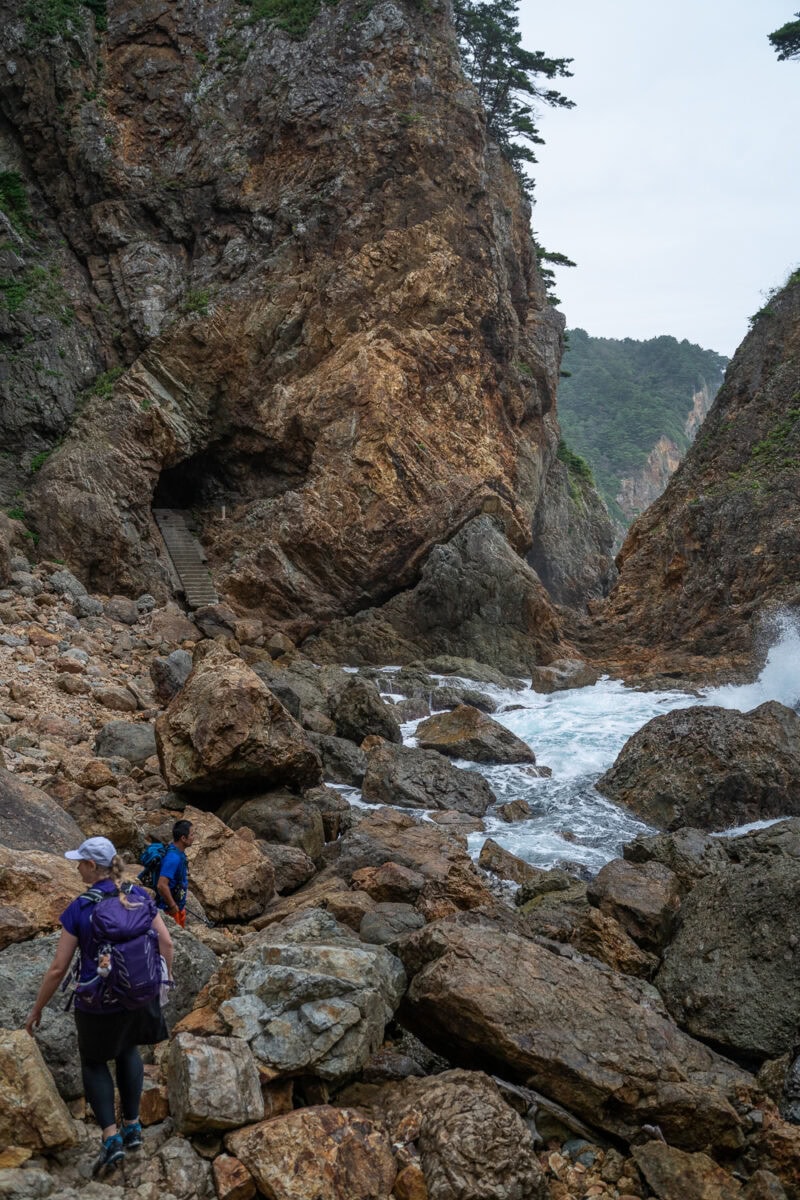
Urato Islands
The coastal trail has left nothing out. The long-distance trail even includes outlying islands! That means you can take a ferry or fishing boat out to the islands and walk the section of the trails on these remote islands. It provides a completely differrent perspective of the trail when you leave the main coast and go out to the quiet islands. In addition, this is a chance to meet local fisherman who often provide the transportation from island to island.
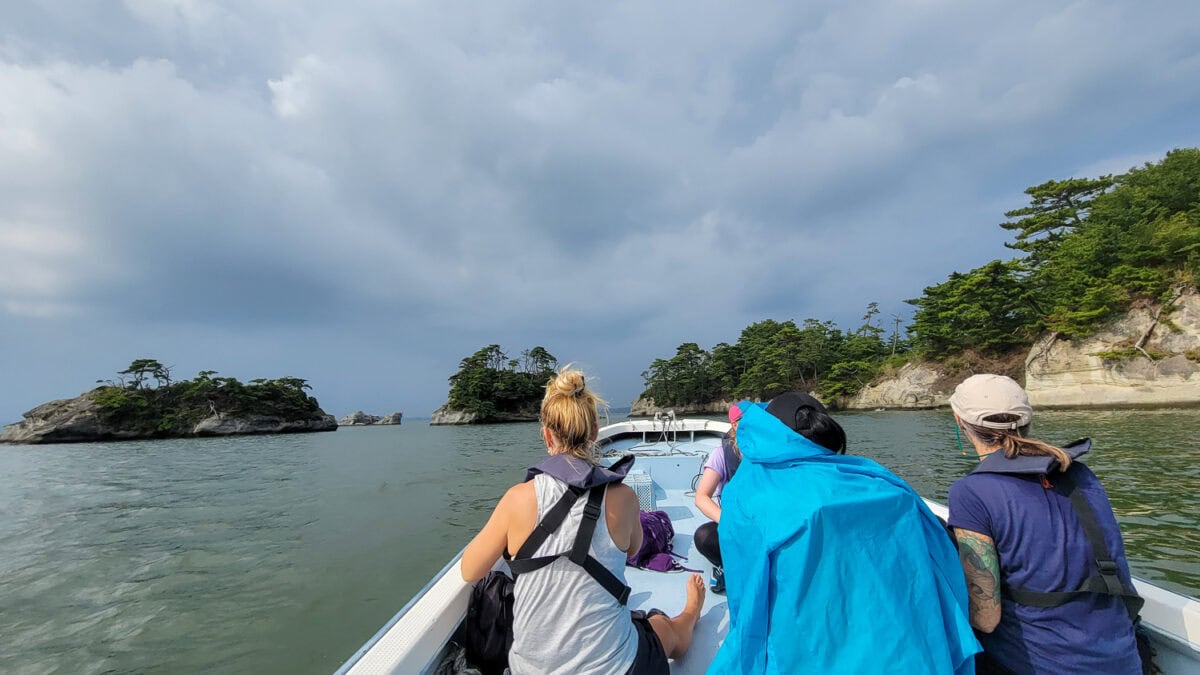
Jodogahama Beach
Do whatever you can to stop here. Not only does it have a beautiful beach that is part of the MCT trail, it also has a very unique landscape. Jagged volcanic white rock formations jut out of the turquoise waters. The white pebble beach is also a popular place for a swim! You can easily rent kayaks and SUPs or even go on a coastal boat ride from the beach. And, of course, the MCT trails go right through this area along the beach!
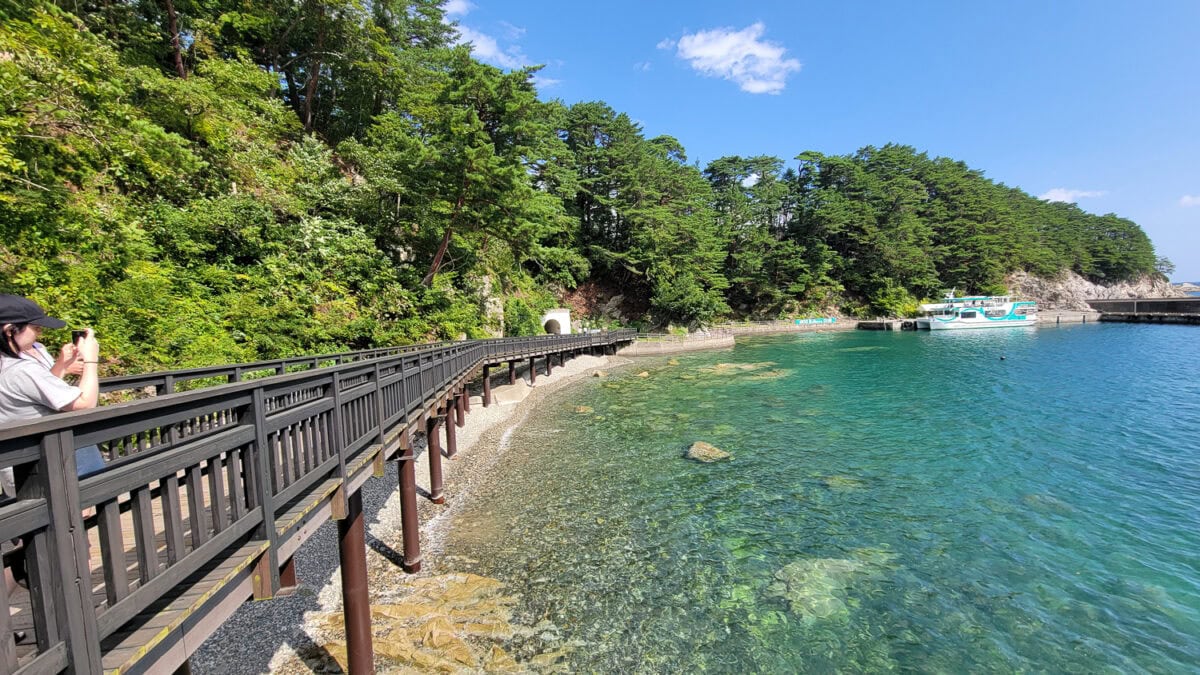
Tsunami Memorials
Along the path, you’ll find multiple memorials where you can pause and reflect on the tsunami’s impact while engaging with locals who share their stories of survival and recovery. On our tour, we saw multiple memorials.
Don’t miss the Arahama Elementary School memorial. During the disaster it served as a shelter for more than three hundred students and local residents. It is the only building left standing in the devastated low lying coastal plain, you can go inside and see the desctruction as the building was essentially left as it was serving as a reminder of the tsunami.
Another key memorial to visit is the Iwate Tsunami Memorial Museum in Rikuzentakata. It is located right on the trail. The building and grounds are somber but beautiful, and the museum and staff were phenomenal. See a chronological exhibit of artifacts and photographs documenting the disaster, and hear guides talk about their personal experience on that fateful day. It also includes a large outdoor space where you can walk and ruminate on the power of nature. This is where you’ll find the Miracle Lone Pine Tree.
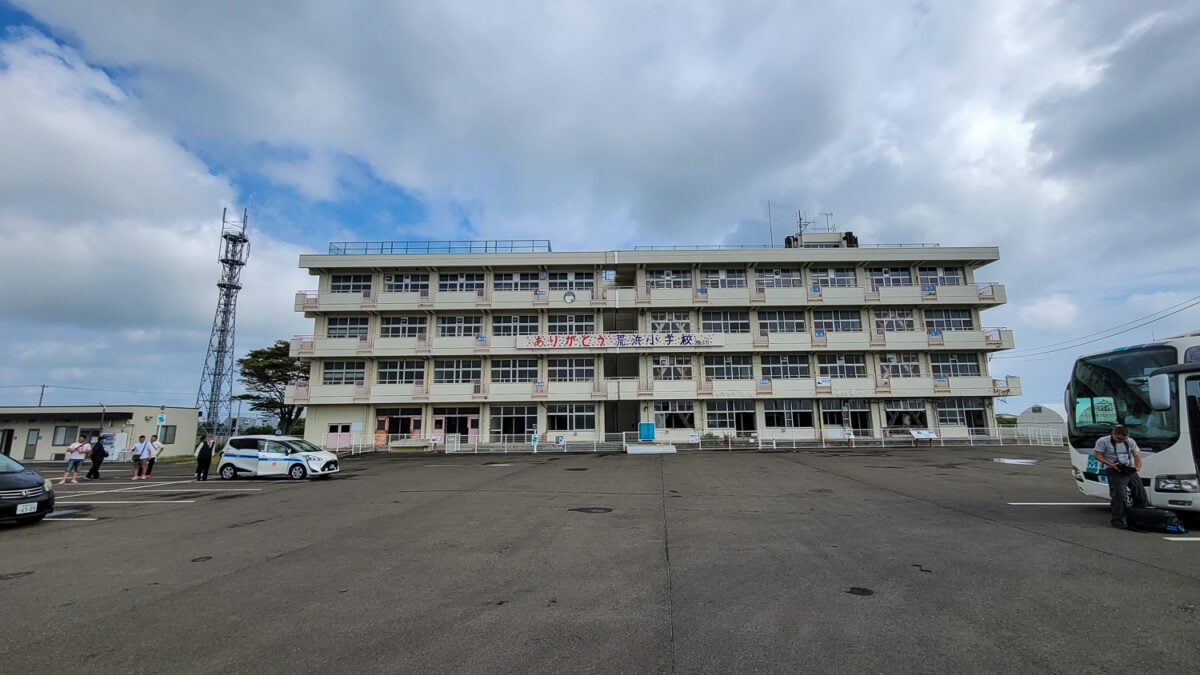
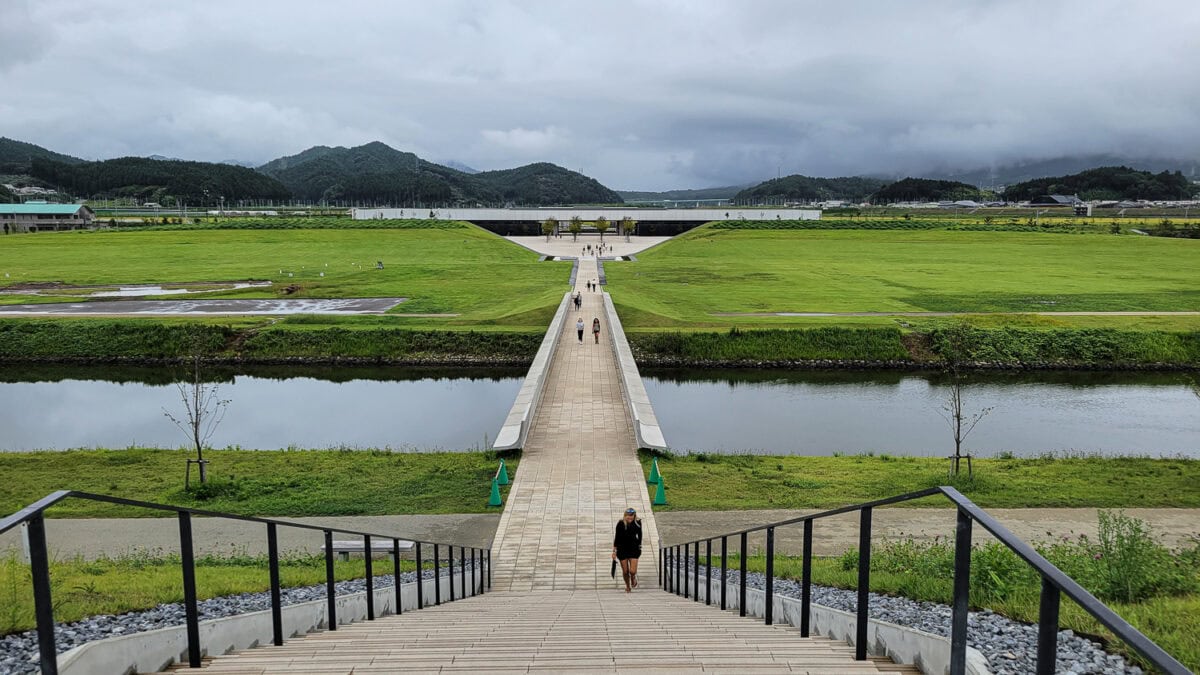
Hike the Full Route from Soma City to Hachinohe
The Michinoku Coastal Trail’s journey from Soma City in Fukushima Prefecture to Hachinohe in Aomori Prefecture showcases a diverse array of landscapes and experiences. Starting in Soma, hikers are greeted by sandy beaches and forest paths, which gradually transition into the rugged cliffs and expansive coastlines that characterize the Sanriku Coast. This variety in terrain keeps the hike engaging and constantly changing, offering new vistas and challenges at every turn.
If you decide to hike the entire trail at once – or over the course of multiple years, it will take around 40 to 50 days total. I personally think it would be fun to walk sections during different seasons.
You can hike the trail in any direction you’d like, but I really enjoyed starting in the south and working my way north to Hachinohe. This way you end at the Kabushima Shrine, which makes for a memorable ending and a great place to get your last MCT passport stamp!
Hike the Highlights of the MCT
It is also possible to focus on the trail’s highlights and do a portion of the MCT for a week or two. Most people stick to the northern region of the trail if they only have a week. Many companies offer 7 to 10 day tours (guided and self-guided) of the northern end from Hachinohe to Jodogahama that rely on local transportation (train and bus) to connect the segments. This will feature many of the trail’s highlights, but you will most likely not get to the southern part of the trail.
It is also possible to find companies that will organize a week long tour but take you to both the south and north like I did. I loved this so much that I decided to start offering tours like this so that people can get a feel for the entire hike and coastal region. These are normally custom tours, or small group tours that run on specific dates.
Companies offering Guided, Self Guided, and Custom Tours of the MCT
Ottsworld Tour – That’s right – I’m running a small group tour of the highlights of the MCT in Oct. 2025! You can learn more about it here.
Raw Travel – a Japanese company that does guided and self guided options
Oku Japan – A Japanese company that does guided and self-guided options
Planning Your Hike
Careful preparation can make all the difference if you choose to hike independently using online resources or join a guided tour. Online resources offer detailed maps and tips for your walk, while guided tours provide curated experiences of the trail’s most beautiful regions.
The trail’s length and varying terrains require thoughtful logistics, including transportation and accommodation planning. Luckily, there are ample resources to help you navigate these aspects, ensuring you can focus on the adventure ahead.
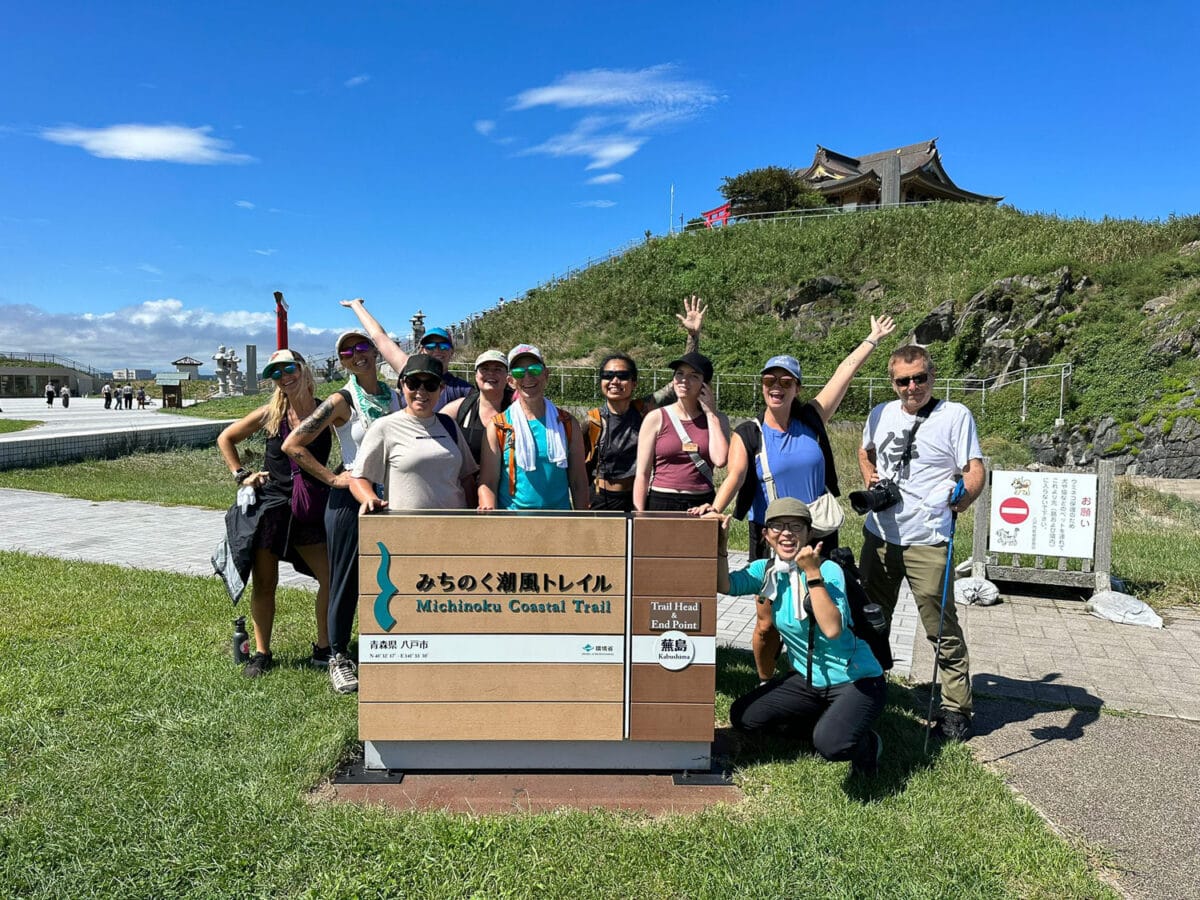
Best Time to Hike
The best time to hike the Michinoku Coastal Trail is during spring (late March to early June) and autumn (September to November). These seasons offer pleasant weather and stunning scenic views, making your journey more enjoyable. While the trail can be hiked year-round, seasonal conditions vary, and it’s important to be prepared for the changes in weather.
No matter when you choose to hike, you’re likely to find the trail relatively uncrowded, allowing you to immerse yourself fully in the natural and cultural beauty of the Tohoku region. Each season brings its own unique charm, from the blossoming flowers of spring to the vibrant foliage of autumn.
Transportation and Logistics
Accessing the Michinoku Coastal Trail is made easier with the JR East Pass, which provides five consecutive days of unlimited travel on all JR lines (including buses) in the region. This pass includes the Tohoku Shinkansen, making it convenient to travel from major hubs like Tokyo Station to the trail’s starting points near Sendai or Hachinohe station.
You can also look into getting an All Japan rail pass for 7, 14, or 21 days which covers Tokyo, airports, and bascially all of Japan. If you are planning on traveling to Tohoku region and other regions, this is the way to go! You have to purchase this pass (and all passes) before you arrive in Japan though.
Luggage Services
Luggage delivery services offer convenient options for hikers, allowing you to focus on your hike without the burden of heavy bags. All companies that offer self-guided tours also provide luggage services. However, if you are doing it entirely on your own, then you may want to consider hiring a regular luggage moving company and having them move your items a couple of days down the road and then to the end.
Takkyubin, a door-to-door delivery service provided by Yamato Transport, allows you to send your luggage between different locations within Japan, including hotels, airports, and even convenience stores like 7-Eleven; essentially acting as a luggage forwarding service.
MCT Passport
The Hiking Passport was created so you can freely document your once in a lifetime journey on foot. You can use it to write out plans for your journey, keep a diary during your trip, and even use it to press pretty fallen leaves. This system of collecting stamps was created so hikers and locals can have more opportunities to meet and chat, putting one town stamp in each municipality along the route.
This is a little different than the Camino de Santiago passport. On the MCT the various lodging places have a stampt you can use. In addition to that, most businesses along the trail also have stamps to utilize. So you are doing much more than just collecting lodging stamps.
There’s also a special way to enjoy the trail if you have a passport: collect a town stamp along with at least two of the other various creative stamps set out at stores, accommodations and more in the area, and you can buy that town’s pin badge as a keepsake.
Experiencing Local Culture and Cuisine
One of the most enriching aspects of hiking the Michinoku Coastal Trail is the chance to immerse yourself in the local culture and cuisine. Staying in traditional Japanese inns, known as ryokan, and participating in community events provide unique insights into the local way of life.
Each region along the trail boasts its own culinary specialties, with fresh seafood being a highlight. From Miyagi oysters to Hirono Town Sea Urchin to Aomori scallops, the trail offers a gourmet adventure for food lovers. Ryokan meals always feature local ingredients (primarily seafood), providing an authentic taste of the Tohoku region’s diverse cuisine.
Special Encounters with Locals
Hikers on the Michinoku Coastal Trail often find themselves welcomed with open arms by the local communities. Take the time to talk to the shop keepers, the people on the train and more. Engaging with locals through hands-on experiences like salt making, fishing boat rides, or participating in meditation at a temple offers a deeper understanding of the region’s heritage. These encounters further enhance this cultural exchange, making your journey more memorable.
Hirono Emotion Train
One particularly touching experience is the weekly event in Hirono town, where locals wave flags at the passing Hirono Emotion train to show appreciation for the volunteers who helped rebuild their village after the tsunami. This wave goodbye is a heartfelt expression of gratitude and connection, embodying the spirit of the Tohoku region.
We participated in this as part of my tour and it was such a special way to meet and talk to locals. One of my favorite parts about it is the locals brought their children so they could teach them the importance of gratitude too. The train is very predictable – so it’s easy to join the locals by the beach in town to grab a flag and wave at the passing train.
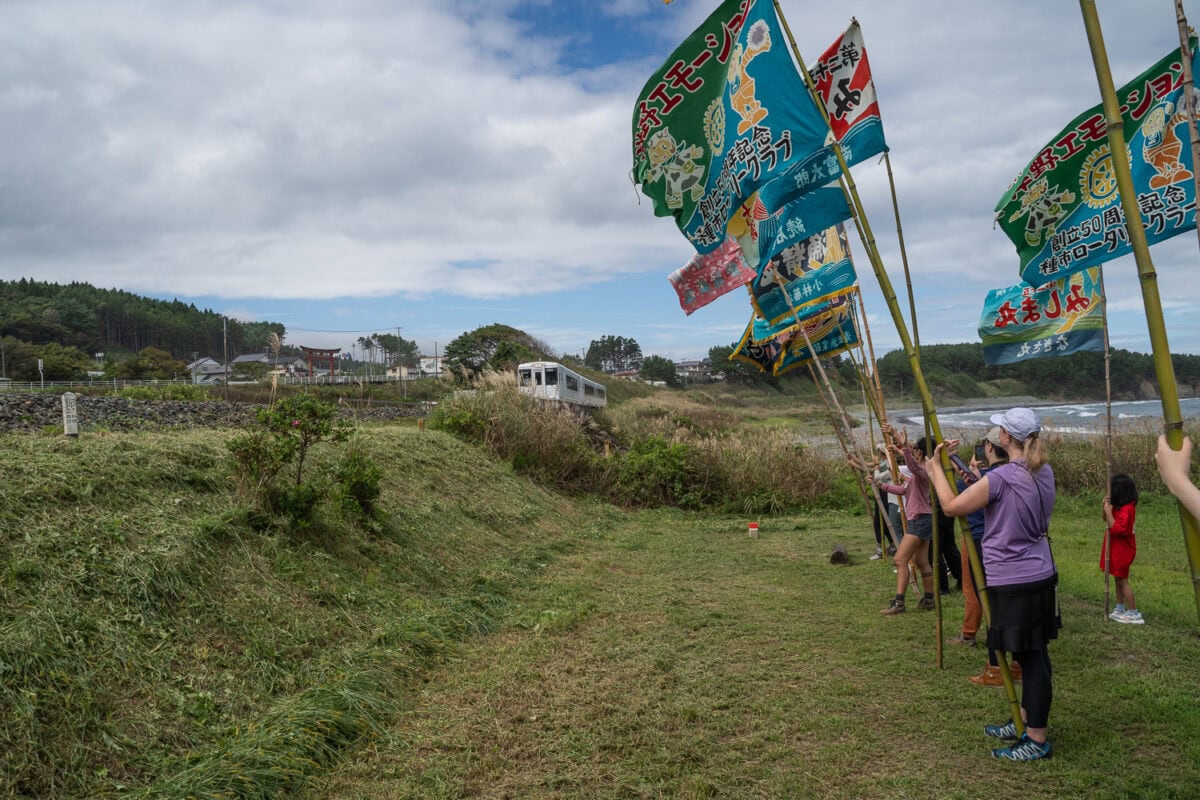
Public Bathhouses
Another one of my favorite local experiences was the night we all went to a public bathhouse to get cleaned up after our hike and before we went to our campsite. Until then, I had only been in baths/onsens associated with a hotel. The hotel onsens are always quite luxurious. However, a public bathhouse is just what it sounds like – anyone can go there. You get the chance to interact with a much more typical subset of people there, not just higher-end travelers.
Plus – you get to participate in the strong culture of public bathing. Public baths are a central part of Japanese bathing culture, which has roots in Buddhism and Shintoism. It is a place where the locals socialize and relax; it’s a big part of the community culture.
Dining Along the Trail
Tohoku cuisine is a highlight of the Michinoku Coastal Trail, offering unique dishes like ‘Gyutan’ (beef tongue) and fresh seafood delicacies such as Miyagi oysters and Aomori scallops. Dining at traditional inns along the trail allows you to savor these regional specialties in a kaiseki meal (multi-course dinners featuring local ingredients) and a setting that enhances the overall experience.
One standout dining experience I enjoyed was at L’Oréolle Tanohata, a restaurant opened by French trained Chef Katsuyasu Ito. Chef Ito is focused on his goal to develop local food culture. Here, you can enjoy meals that make the most of local resources, accompanied by breathtaking views. the restaurant is perched right along thte coast and the MCT goes right by it! For me this was one of the best restaurants along the trail. Chef Katsuyasu had an open kitchen, so you could watch him do his exquisite work (it was like watching an artist), making this experience even more special.
Additionally, a number of the local fish markets offer an interactive dining experience where diners can create their own seafood bowls by purchasing fresh fish from the local market vendors, ensuring every meal is as fresh and unique as the trail itself.
Accommodation Options
Accommodation along the Michinoku Coastal Trail ranges from campsites to traditional Japanese inns, catering to various preferences and budgets. Booking in advance is recommended, especially during peak hiking seasons, to ensure availability and a smooth experience.
Whether you prefer the rustic charm of a campsite or the cultural immersion of a ryokan, the trail offers a variety of options. Many accommodations have hot springs/onsens, allowing you to relax and rejuvenate after a day of hiking.
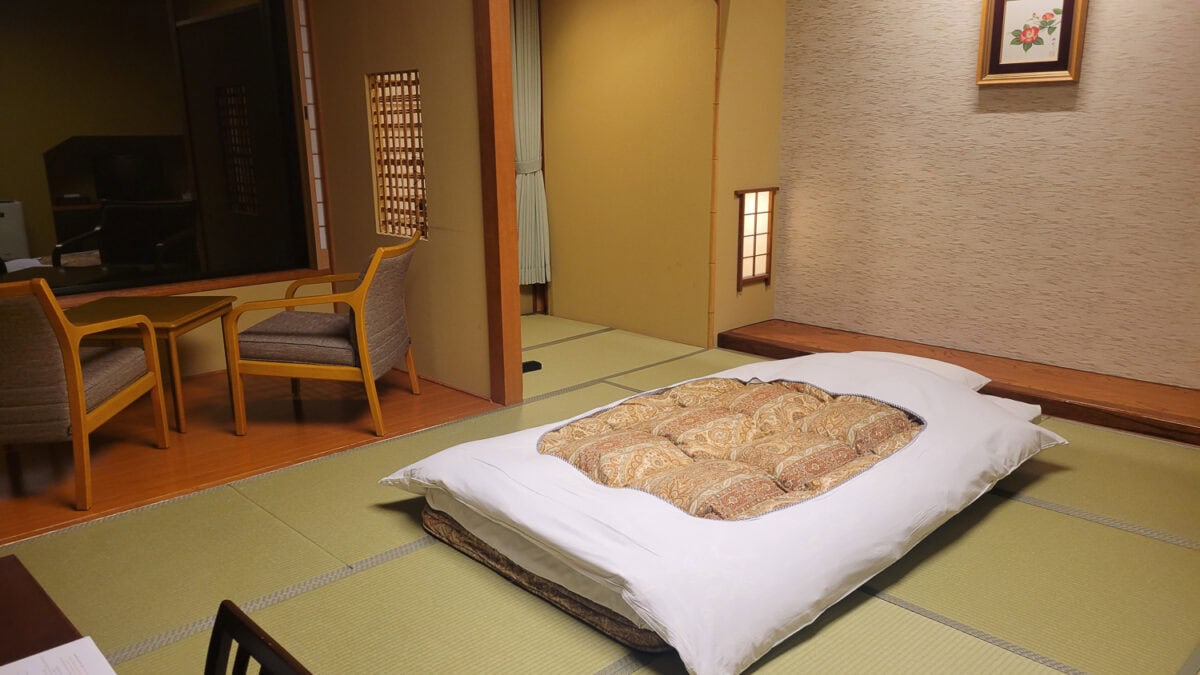
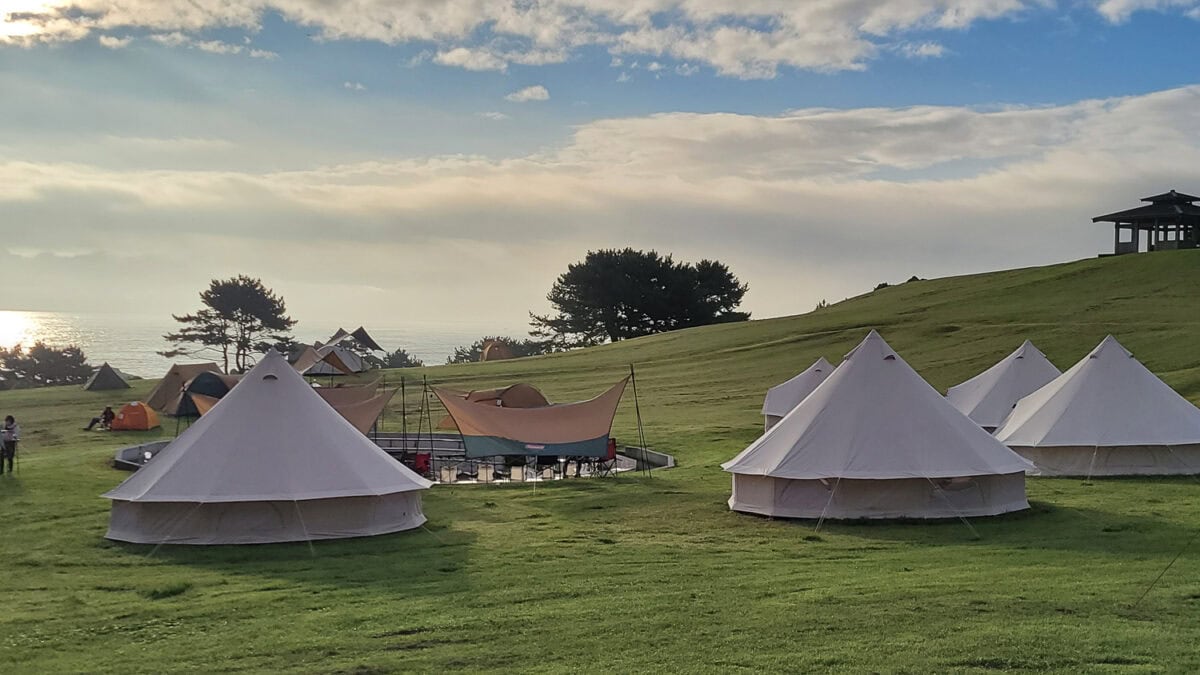
Campsites and Glamping
Campsites along the Michinoku Coastal Trail offer a unique way to experience the great outdoors. Facilities like the Kamiwarisaki Campsite, which features ocean views and amenities for BBQ, showers, and baths, are popular choices for hikers. These campsites provide essential facilities such as restrooms and cooking areas, enhancing the outdoor experience. However, it’s important to note that some campsites may close during winter, so planning ahead is essential.
As part of my tour, we glamped at Tanesashi Natural Lawn in the Aomori prefecture. The lawn is a rare coastal grassland where lush green grass grows naturally right up to the edge of the Pacific Ocean. You are treated to a delicious barbeque with local meats and seafood, and get to fall asleep to the crashing waves.
Japanese Style Hotels
Staying in traditional Japanese inns, known as ryokan, provides a culturally immersive experience along the Michinoku Coastal Trail. These inns offer amenities like tatami mat rooms, futon bedding, and kaiseki meals. Ryokans not only provide a comfortable place to rest but also enrich your journey with authentic Japanese hospitality.
One such accommodation I loved was Jodogahama Park Hotel surrounded by nature and views of the sea. It offers a peaceful retreat where hikers can relax and enjoy the serene environment. The combination of traditional amenities (indoor/outdoor onsen and futons) and stunning natural settings makes staying here a highlight of the Michinoku Coastal Trail experience.
Safety and Preparedness
The Michinoku Coastal Trail presents various trail conditions and potential hazards that hikers should be aware of. Here are some key points to consider as you plan your hike:
-
Average summer temperatures can reach up to 30°C in Soma.
-
Winter lows can drop to -4°C in Hachinohe, requiring appropriate clothing and gear.
-
Bear sightings are possible in specific sections, particularly in Aomori and northern Iwate, so taking precautions is essential. We never saw a bear – but we saw plenty of bear signs!
Insect season also poses challenges, with leeches and ticks being common. Wearing appropriate clothing and using insect repellent can mitigate these risks. Additionally, certain parts of the trail involve river fording, such as near Rikuchu-Nakano station, where caution is advised based on water levels.
Offline maps are indispensable, as some sections of the trail may lack clear signage or phone coverage. Additionally, packing lightweight, non-perishable food items and a reliable water filter ensures you stay nourished and hydrated throughout your journey.
MCT Tools and Helpful Resources
Trail Maps
You can purchase detailed English language maps here. The maps provide essential information you need, such as an elevation chart and numbered landmarks showing relevant landmarks, including satellite facilities, places to get water, restrooms, places to buy food, and restaurants/cafes. The distances between the landmarks is also shown.
You can also utilize Google Maps here. This map provides information in English like lodging, grocery stores, campsites, and more.
Books
Data Book is an English companion book for Michinoku Coastal Trail maps. It provides important information for the entire Michinoku Coastal Trail that didn’t fit on the maps. This Data Book was made by hikers, for hikers, making it easy to calculate that day’s target distance, check where the nearest places are to stock up on food, stay at a hotel or take a break, and see how much elevation change is in store.
Websites
Michinoku Trail Club Website
Michinoku Trail Website – created by an English tourist who hiked the entire trail
Natori Trail Center
A physical brick and mortar visitor center staffed by trail experts.
3-12-1 Yuriage Higashi, Natori City, Miyagi Prefecture, 981-1204. The phone number is (+81) 223-98-6181.
Forums
Michinoku Trail Club Facebook Group – This is monitored and maintained by the Michinoku Coastal Trail Walkers group.
GPX Maps
Note that the official maps are the paper maps – they are the most accurate. You can download the trail route in GPX file format (GPS data). Use any smartphone app you like that can use GPX files to check the trail route and your location.
Michinoku Coastal Trail Videos
The Japan Tourism Board has put together a number of videos here of the 1000 km hiking trail that show you the coastal landscapes via drone as well as interviews with hikers and locals. These will help you get a better feel for the trail in general.
Gear and Packing List
Thorough preparation is key to a successful hike on the Michinoku Coastal Trail. A well-organized packing list that includes lightweight, moisture wicking, durable gear can make your hike more enjoyable. Non-perishable food items and a reliable water filter are critical for long treks, providing easy meal preparation and access to clean drinking water.
Essential items include:
Maps | Backpack | Compass | First Aid Kit | Headlamp | Rain gear | Snacks | Water bottle/bladder

Check out my complete list of essential hiking gear I recommend for all of the hikes I write about.
Summary
My travels along the trail introduced me to a part of Japan I had never seen, and it also filled my soul with raw beauty of Japan’s northeastern coastline with rich cultural encounters and a poignant history. From the breathtaking views of the Kitayamazaki Cliffs to the heartwarming interactions with local communities, every step on this trail was meaningful to me.
Remember to respect nature by practicing Leave No Trace principles and ensure your safety with proper planning and gear. With its diverse accommodation options, delicious regional cuisine, and unique cultural experiences, the Michinoku Coastal Trail is more than just a hike—it’s an adventure that touches both the heart and soul. So lace up your boots, pack your essentials, and set out on a journey that promises experiences you’ll talk about for a lifetime.
Frequently Asked Questions
Use this space to provide your website visitors with a brief description on what to expect before clicking on a section title.

